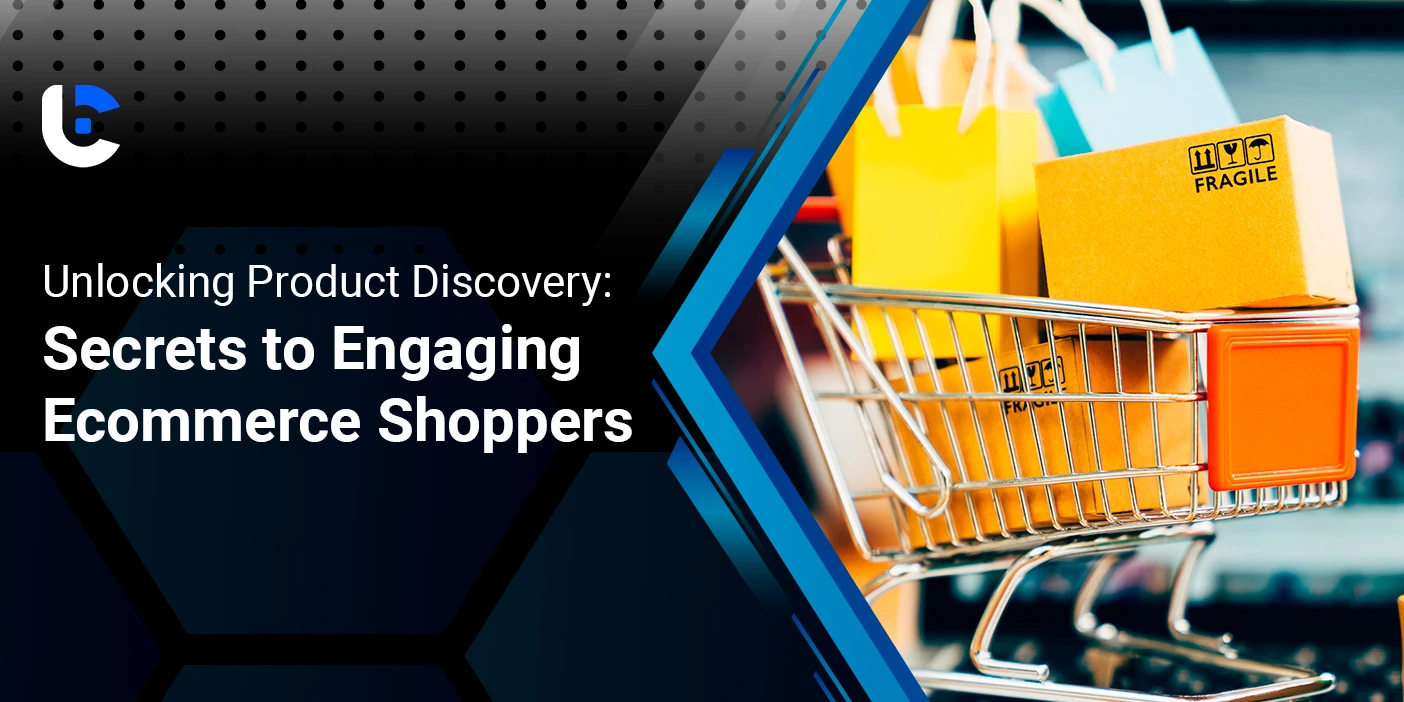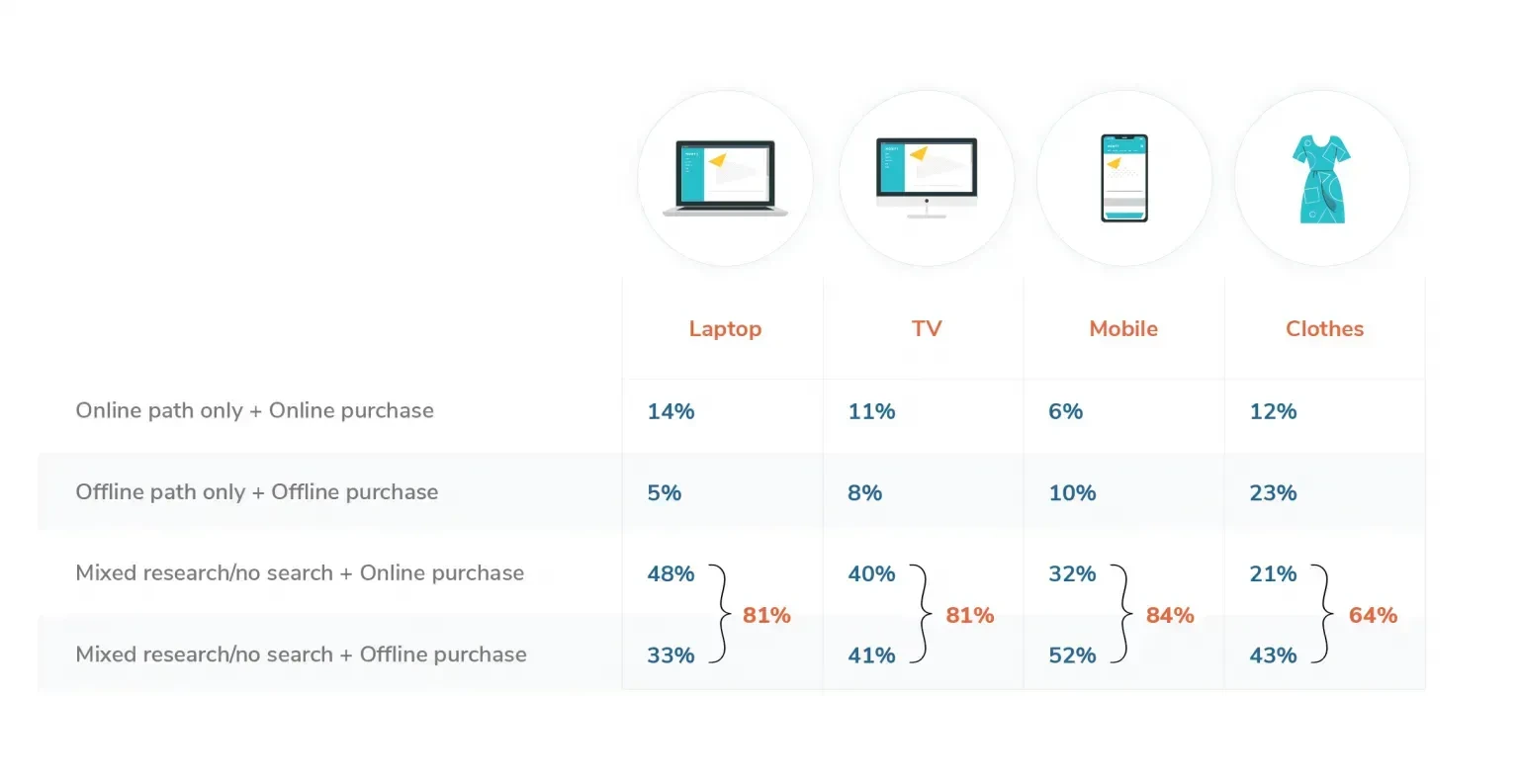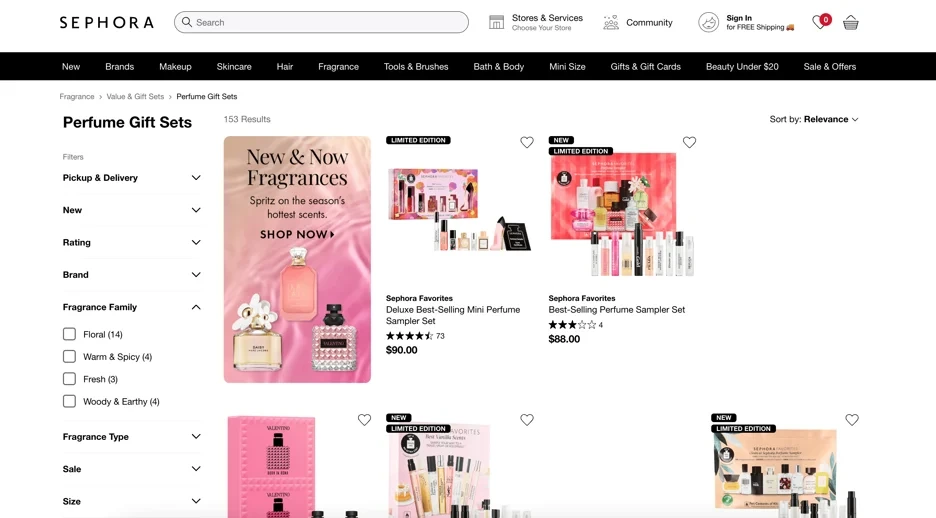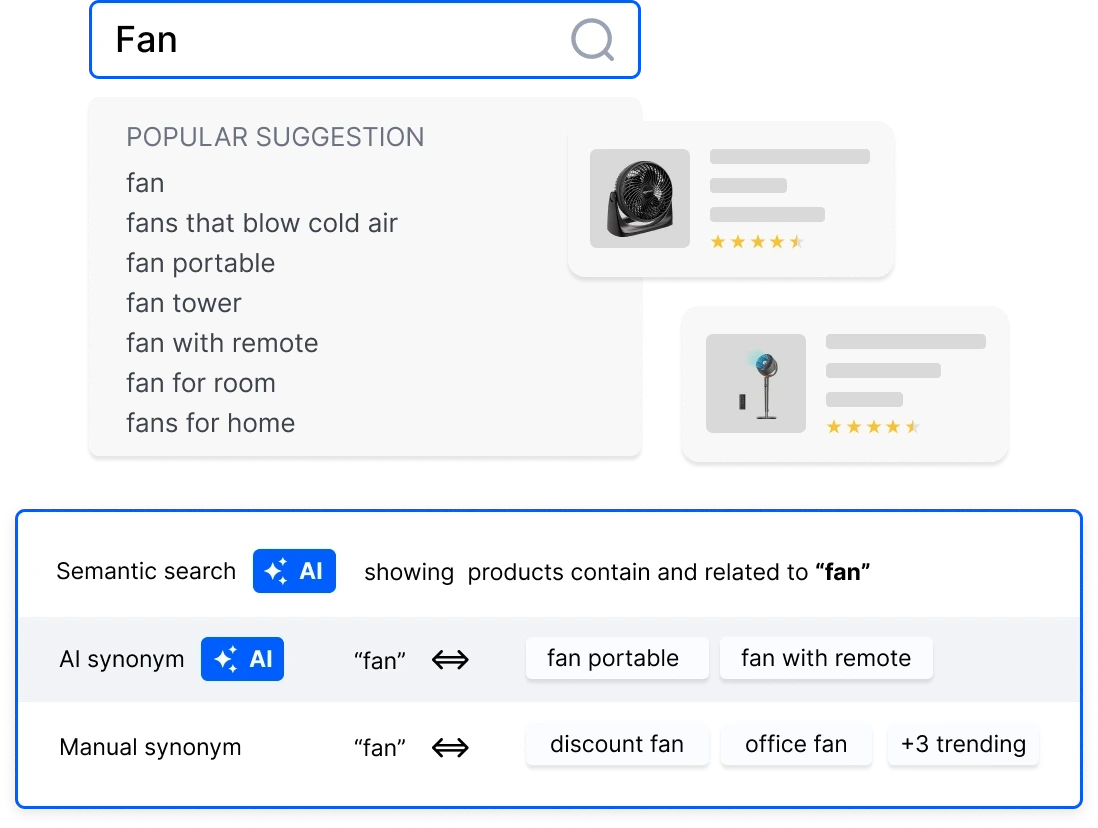Table Of Contents:
The Power of Product Discovery
Ever walked into a store where nothing’s labeled, the staff ignore you, and you can’t find what you came for? That’s precisely how online shoppers feel when product discovery goes wrong.
Let’s say a shopper searches for “wireless earbuds” on your site. They get unrelated results—phone cases, tangled cables, maybe a few random speakers. Frustrated and unimpressed, they bounce in seconds. No sale. No second chance.
In ecommerce, it’s not just about what you sell—it’s about how shoppers find it. That’s where the product discovery process makes or breaks your brand. A smooth discovery journey keeps users engaged, shortens decision time, and boosts conversions. A clunky one? They switch to your competitors.
The e-commerce user journey hinges on how effortlessly users can search, browse, and stumble upon products they’ll love. And the most innovative brands? They’ve cracked the code using discovery frameworks and AI to anticipate shopper needs before they even click.
So, what is product discovery really about—and how can you master it?
What Is Product Discovery?
Product discovery in ecommerce is the digital version of “window shopping”—but with way more at stake. It’s the process that helps shoppers find what they want (and what they didn’t know they wanted) through intuitive search, smart browsing, and personalized recommendations. And when does it work? It sells.
- A staggering 69% of consumers say it’s important to see relevant results when searching or browsing an online store. Miss the mark, and they bounce—fast.
- Effective product discovery is directly tied to revenue: e-commerce sites with personalized discovery tools see 20% higher conversion rates.
But discovery isn’t just about features—it’s about understanding browse behavior. Shoppers rarely know precisely what they want. They explore. They filter. They click. And your site needs to guide them, not frustrate them.
That’s why product discovery ecommerce strategies must center on user intent, behavior, and personalization. When discovery is seamless, engagement and sales naturally follow.
Supercharge Your Site Search & Product Discovery
Discover how our AI can transform your product discovery and boost conversions.
Schedule a DemoWhy Use Product Discovery Frameworks?
Product discovery isn’t just about showing what shoppers search for—it’s about understanding why they buy. Using structured frameworks gives your ecommerce strategy clarity and direction by revealing the underlying motivations behind purchasing decisions. Rather than guessing what customers want, frameworks provide a strategic, intentional approach that leads to more personalized and efficient shopping experiences. This, in turn, drives higher engagement and boosts conversions.
Jobs-to-be-Done (JTBD)
The core principle of Jobs-to-be-Done is simple: customers don’t just buy products—they hire them to accomplish specific tasks or solve problems. This means you need to focus on the “job” behind the purchase rather than the product itself.
How does this work in practice? You identify both the functional and emotional jobs your shoppers want to complete. For example, instead of optimizing a search feature around “laptop stands,” a retailer applying JTBD realizes that customers are looking for solutions to create a comfortable work-from-home setup. With that insight, they refine filters, offer bundled ergonomic products, and add educational content on posture and comfort, making the discovery process more meaningful and effective.
User-Centered Design (UCD)
Another powerful approach is User-Centered Design, which builds the entire product discovery journey around actual user behavior. The goal is to continuously test and iterate based on honest user feedback to reduce pain points and improve usability.
For instance, a fashion retailer noticed shoppers abandoning their site due to overwhelming filter options. By simplifying the interface, prioritizing best-selling items, and introducing image-based filters, they made browsing easier and more enjoyable. This focus on user needs helps create discovery flows that feel natural and intuitive.
Benefits of Using Frameworks
Using frameworks like JTBD and UCD brings several key advantages:
- Improved clarity in decision-making by focusing on shopper intent
- More personalized experiences rooted in real motivations, not assumptions
- Higher engagement and conversion rates thanks to streamlined, relevant discovery
Uncover Hidden Gaps in Your Search and Product Filters
Get a free product discovery audit and find opportunities to improve conversions.
Talk to an ExpertProduct Discovery Techniques to Engage Shoppers
Effective product discovery is the bridge between casual browsing and confident purchasing. Let’s explore three powerful techniques that transform your e-commerce experience from basic to irresistible.
Optimized Search
Dynamic search results are no longer optional—they’re expected. Today’s shoppers demand relevant suggestions as they type, and search engines must respond in real time. Dynamic search results use customer behavior, popular queries, and contextual intent to adapt on the fly.
For example, if a shopper searches “running shoes,” a smart search system refines results by gender, brand preferences, or even color before the shopper finishes typing. This level of personalization cuts down on friction and boosts conversion rates dramatically.
Curated Browsing
Not every shopper uses the search bar—many prefer to browse. That’s where curated browsing comes in. Clear category pages, well-designed filters, and intuitive navigation help guide users through the discovery journey. The more effortless the browsing experience, the more likely a shopper is to stay engaged.Smart filters that adapt to previous interactions—like showing vegan options to a user who previously bought cruelty-free products—can create a hyper-relevant experience. This enhances shopper engagement and significantly reduces bounce rates.
Personalized Recommendations
Personalized product recommendations are your silent sales team. They work 24/7, showing shoppers what they didn’t know they needed. Leveraging data from past behavior, location, and preferences, these AI-powered suggestions increase average order value and customer loyalty.
Think of Amazon’s “Customers also bought” or Netflix-style carousels on retail sites—they’re more than helpful; they’re powerful psychological nudges that convert.
Sephora’s Smart Suggestions
Sephora nailed it with AI-driven product recommendations. By tracking customer preferences and browsing habits, they delivered ultra-relevant suggestions, leading to a 25% lift in basket size and a spike in customer retention.
Target’s Filter Overhaul
Retail giant Target revamped its on-site filters and integrated more intelligent recommendations. By refining category filters and using shopper data to personalize results, they reported a 20% increase in conversions and a noticeable boost in repeat purchases.
Here’s a Free Ebook: How to Build an Amazon-Like Product Discovery Experience on Your Site
The Role of AI in Product Discovery
AI’s Impact on Personalization
AI product discovery platforms are transforming how shoppers find products online. By analyzing vast amounts of user data, such as search queries, clicks, browsing patterns, and purchase history, AI delivers highly personalized product recommendations that feel intuitive and relevant. Unlike traditional static search systems, AI learns and adapts in real time to understand each shopper’s unique preferences.
How AI Analyzes User Data
Machine learning forms the backbone of AI-driven product discovery. These platforms interpret user intent by recognizing patterns in behavior rather than relying solely on keywords. For example, if a shopper frequently searches for eco-friendly products, the AI will prioritize sustainable options in their search results and recommendations, making the experience more targeted and effective.
Benefits: Enhancing Relevance and Reducing Friction
One of AI’s greatest strengths is improving the relevance of search results and recommendations. Instead of overwhelming shoppers with generic options, AI curates selections based on individual needs and context. This reduces friction by simplifying the decision-making process, speeding up product discovery, and decreasing bounce rates. When shoppers feel recognized and their needs are met, they’re more likely to interact and make a purchase.
Real-Time Adaptation for Smarter Shopping
AI platforms continuously adjust product displays based on live shopper interactions. If a user narrows their search to specific attributes, such as size, color, or price range, the system dynamically updates recommendations to match these preferences instantly. This seamless adaptation keeps the shopping journey smooth and personalized at every step.
Leading ecommerce brands report measurable gains by integrating AI-driven product discovery tools. For instance, a retailer using an AI-powered recommendation engine saw a 25% increase in conversions by showcasing products tailored to individual shopper behavior. Another brand improved customer satisfaction by dynamically reordering product grids to highlight in-stock items based on real-time demand.
Actionable Tips for Ecommerce Success
If you’re ready to elevate your product discovery ecommerce strategy, here are four practical steps to help you move from theory to traction:
1. Audit Your Current Discovery Process
Start by analyzing your store’s existing discovery touchpoints—search speed, filter relevance, and recommendation accuracy. Are shoppers finding what they need fast, or bouncing due to friction? A quick audit can uncover hidden gaps and missed opportunities.
Assess How Optimized and Engaging Your Product Discovery Experience Is — With a Free Product Discovery Audit.
2. Implement One New Technique
Pick one proven product discovery technique to integrate. It could be introducing a dynamic search that responds to real-time queries or AI-powered recommendations that suggest relevant items. Keep it focused and track performance metrics like click-through rate and session duration.
3. A/B Test for Smarter Decisions
Use A/B testing to test different filter structures, layouts, or messaging. Compare shopper engagement and conversion rates between versions to determine what drives more interaction. Data > gut feeling.
4. Scale with AI
When you’re ready to grow, invest in an AI product discovery platform that learns from shopper behavior. AI can personalize journeys at scale, making every visit more relevant and every product recommendation more innovative.
Unlocking Shopper Engagement
Product discovery isn’t just a backend process—it’s the front line of ecommerce success. From frameworks like Jobs-to-be-Done to AI-driven personalization, the ability to guide shoppers effortlessly from curiosity to conversion is what sets leading brands apart.
If your product discovery journey isn’t driving engagement, it’s time to rethink the strategy.
- Start with an audit.
- Try one new technique.
- Let AI do the heavy lifting.
Don’t leave conversions to chance—design them.
Ready to upgrade your product discovery game? Evaluate your current strategy or explore an AI-powered solution today.
Boost Your eCommerce Conversion Rates with Expert Guidance
Get a free consultation with our conversion specialists to tackle your biggest challenges.













